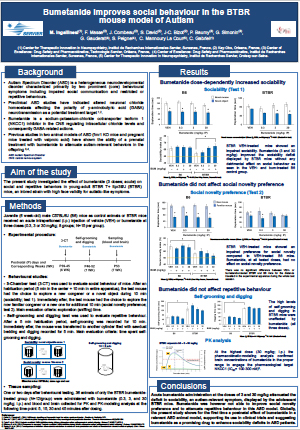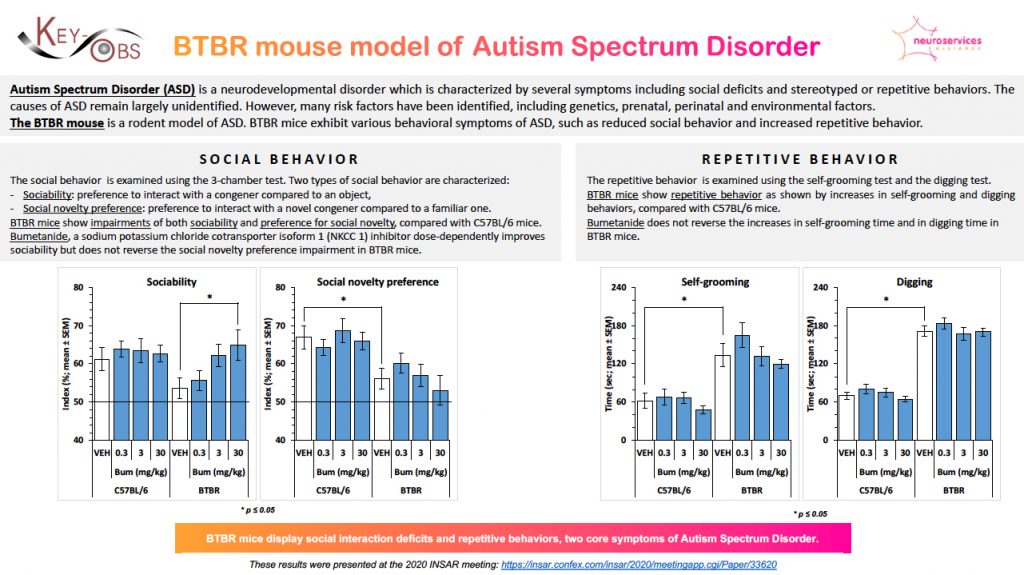
In a recent publication, Neuroservices-Alliance member KEY-OBS presents new findings on how Bumetanide improves social behaviour in the BTBR mouse model.
Autism Spectrum Disorder (ASD) is a heterogeneous neurodevelopmental disorder characterized primarily by two prominent (core) behavioural symptoms including impaired social communication and restricted or repetitive behaviours.
Preclinical ASD studies have indicated altered neuronal chloride homeostasis affecting the polarity of y-aminobutyric acid (GABA) neurotransmission as a potential treatment target.
Bumetanide is a sodium-potassium-chloride cotransporter isoform 1 (NKCC 1) inhibitor in the CNS regulating intracellular chloride levels and consequently GABA related actions.
Previous studies in two animal models of ASD (fmr 1 KO mice and pregnant mice treated with valproic acid) have shown the ability of a prenatal treatment with bumetanide to attenuate autism relevant behaviors in the offspring.
Download the poster co-written by KEY-OBS and Servier for in-depth data on how Acute bumetanide administration attenuated the deficit in sociability, and autism-relevant symptom, displayed by the adolescent BTBR mice.

Our member KEY-OBS, CNS CRO expert in CNS disease models and behavioural studies, examined through two behavioural experiments the social and repetitive behavior of the BTBR mouse model.
